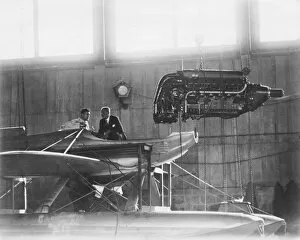Production Lines Collection
"Revolutionizing Aviation: The Power of Production Lines" From the iconic Rolls-Royce Merlin X to the mighty Hughes H-4 Hercules
All Professionally Made to Order for Quick Shipping
"Revolutionizing Aviation: The Power of Production Lines" From the iconic Rolls-Royce Merlin X to the mighty Hughes H-4 Hercules, they have played a pivotal role in shaping aviation history. These assembly systems have propelled innovation and efficiency, enabling the creation of groundbreaking aircraft that pushed boundaries. One such marvel was the Supermarine S-6B, a sleek seaplane that dominated the Schneider Trophy races in the 1930s. Its success was partly due to streamlined production processes that allowed for rapid construction and fine-tuning of its powerful engine. Another legendary aircraft born from production line prowess was the North American P-51 NA-73 Mustang This agile fighter plane became an icon during World War II, thanks to its speed and maneuverability – qualities made possible by efficient manufacturing techniques. But it wasn't just fighters that benefited from these advancements; bombers like the Hughes H-4 Hercules, famously known as Spruce Goose, also owe their existence to production lines. Constructed mostly out of wood due to wartime material shortages, this colossal flying boat showcased how mass-production could overcome challenges and deliver extraordinary results. The Hawker Hurricane stands as another testament to production line achievements. As one of Britain's most critical fighters during WWII, it demonstrated how standardized assembly methods could rapidly produce reliable aircraft needed for defense against enemy forces. With each passing year, technology advanced further – engines became more powerful and airframes more sophisticated. Yet throughout this progress, one constant remained: production lines continued churning out exceptional machines like clockwork. The Hughes H-4 Hercules or Spruce Goose exemplifies this persistence with its massive size and ambitious design goals. Though only one prototype was built due to changing circumstances after WWII ended, it remains a symbol of what can be achieved when innovative thinking meets efficient manufacturing processes on a grand scale.



